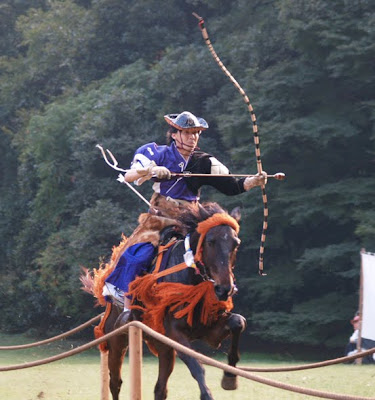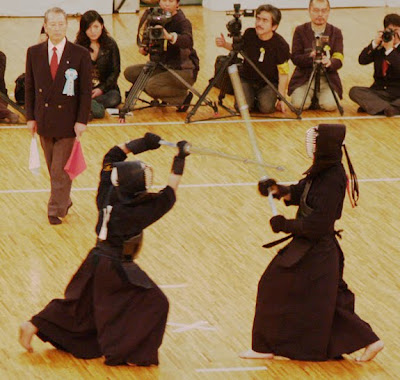Japan’s Culture Day Keeps Traditions Alive
Martial arts demonstrators sparring in sight of the Shinjuku Building on Culture Day.
In this fast-paced modern world of whizzing beeping flashing technology where people rush hurriedly about to keep up with these fast-changing times, it's all too easy to forget the traditions and customs of earlier slower times. Japan's efforts to keep a tenuous cultural link to its past is the national holiday known simply as Culture Day (Bunka-no-hi).
Culture Day (Nov. 3) was originally a holiday to celebrate the birth date of Emperor Meiji (1852-1912). After his death, his birthday was designated as Culture Day, a day in which cultural arts are honored.
A mother and 3-year old daughter dressed in Kimono visit Meiji Shrine
Honoring Imperial birthdays is a relatively new tradition. For long centuries, the Emperor was a shadowy figure controlled by the military dictators known as Shogun and before them the regents and ministers of the Imperial court.
Emperor Meiji was the first emperor in a long, long time to emerge from the shadows to reclaim the power and dignity of the Imperial family. The Shogun government was abolished in 1868, and Japan began its advancement into the modern world.
Yabusame archer prepares himself for the next target
Culture Day also marks the day when the post-war constitution was officially announced -- Nov. 3, 1946.
Kendo competition at Budokan
Every year the Emperor awards individuals for their endeavors and accomplishments in the cultural arts or academic pursuits. The Order of Culture is one of the highest honors to be given from the Emperor. These awards are not limited to Japanese citizens, however. The American astronauts who first landed on the moon in 1969 received the Order of Culture.
Old and new come together
All over Japan many cities and villages put together various art and cultural presentations such as historical re-enactments, parades, festivals, martial arts demonstration, etc. Quite a number of adults and children will wear kimonos and visit shrines and temples. Traditional Japanese weddings are popularly held on this day too.
Yabusame archers of the Takeda School at Meiji shrine
Meiji Shrine which enshrines the spirit of Emperor Meiji, holds a number of events on Culture Day. Various martial arts are demonstrated using wooden and steel weapons. The mounted archery ritual known as Yabusame is performed as well. Yabusame involves an archer riding a fast horse along a narrow track while shooting arrows at two or three targets. In the past Yabusame was only performed by Samurai, but now women participate in the ritual as well. This shows that Culture Day is not some inflexible stuffy holiday designed to resist change but rather that it is adaptable to the changing times.
Youth practicing their skills and discipline at Budokan
On the grounds where the old Shogun Castle once stood, a kendo competition was held this Culture Day at the Budokan Hall. This is where the Beatles played when they toured Japan back in their heyday. Kendo is a traditional martial arts based on the samurai fencing schools of the past in which the participants garbed in armor from head to waist fight with swords of bamboo.
It's a nice day for a white wedding at Meiji Shrine.
Whatever its origins, a Culture Day holiday is a wonderful idea. The modern world needs such days to reflect on the cultures of the past by both learning from the mistakes of the past so as not to repeat them and keeping traditional arts alive to be passed down to future generations.
| Kendo "The Way of the Sword" Kendo is one of the oldest traditional martial arts still practiced by many in Japan. It derives from the old schools of sword fencing that samurai attended to improve themselves both physically, mentally, and spiritually. Today many top Kendoka (practitioners of Kendo) are police officers. It's a rather expensive pastime to get into, as the equipment all told can run upwards in the thousands of dollars. Kendoka use split bamboo swords and wear armor that covers most of their body. The most recognizable feature of their armor is the cage-like face mask. In competition earning points is quite difficult, as a Kendoka must demonstrate a perfect attack with sword, body, and spirit. TIME: Nov 3rd PLACE: All over Japan (check local listings) - The above article was mainly at Meiji Shrine and Budokan in Tokyo |











No comments:
Post a Comment